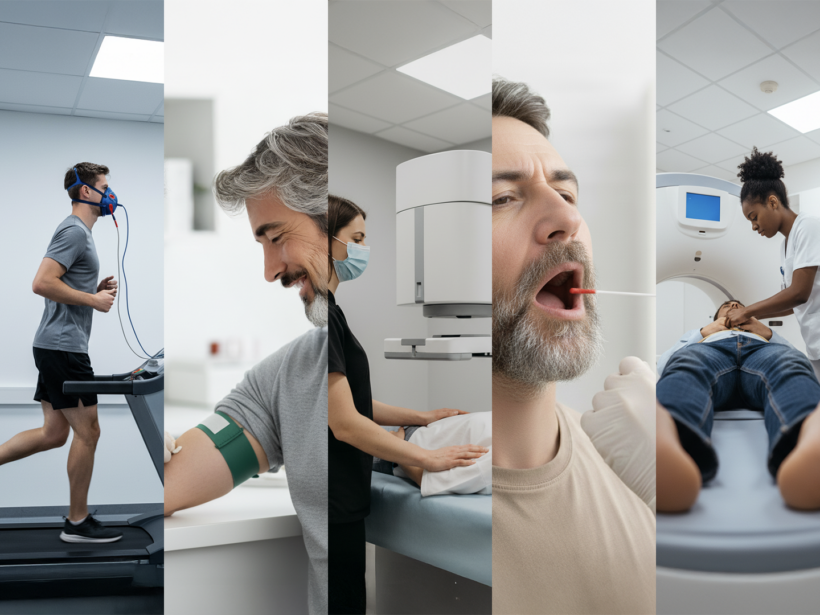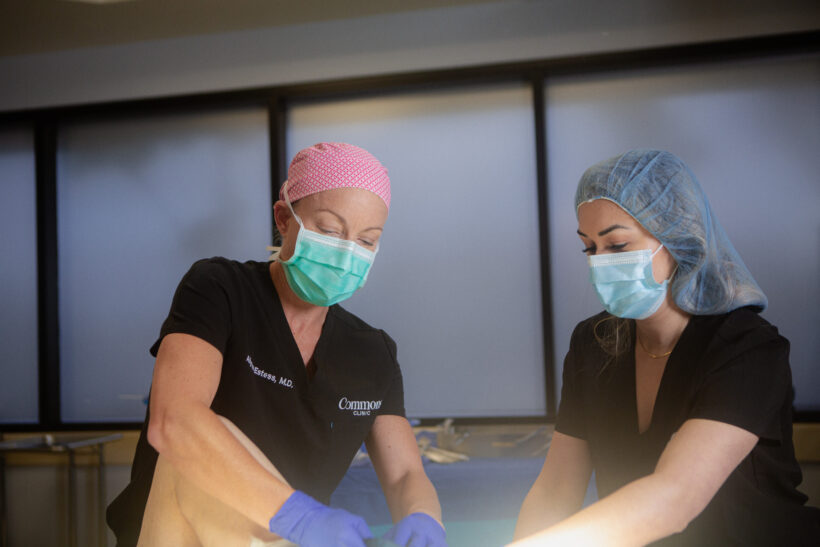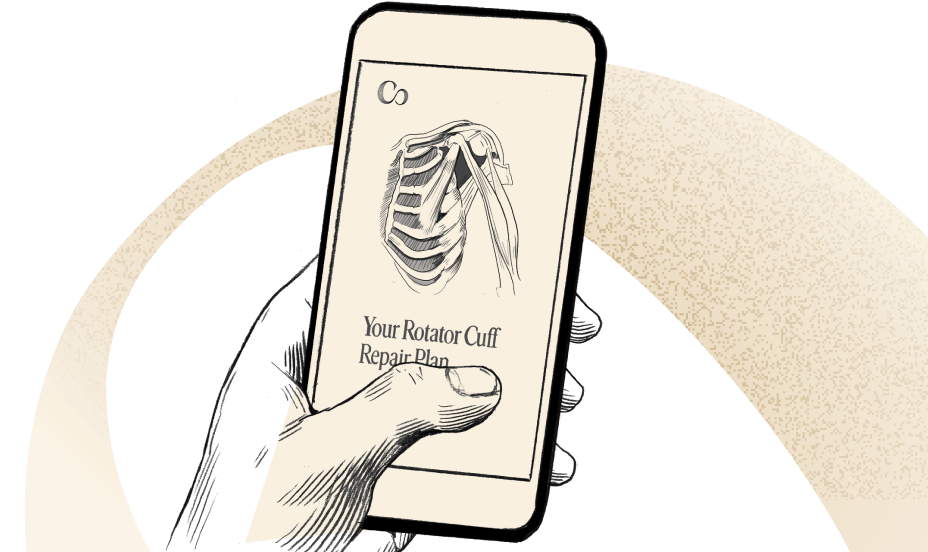Hidden Health Risks Your Annual Checkup Won’t Catch — And, What to Do About It

For many of us, the annual physical exam has come to feel more like a formality than a meaningful check-in on our actual health risks. Only about 7% of seemingly healthy adults actually complete one each year—and it’s not hard to understand why.¹
Consider this familiar scenario: you haven’t seen a primary care doctor in years. When you finally schedule a visit, you arrive with a few simple concerns—a mole that’s changed and nagging low back pain. No one examines the mole. No one checks your back. Instead, your doctor refers you to dermatology and physical therapy. The earliest dermatology appointment? Nine months away.
You’re in and out the door in 15 minutes, and you leave wondering: What if that mole really is something serious? What should I be doing for my back pain right now?
What Really Happens During an Annual Physical
For many adults in their 30s, 40s, and 50s, the annual physical exam goes something like this:
- Wait 15–30 minutes in the lobby before being called back.
- The nurse checks weight, height, and blood pressure.
- A few quick questions about lifestyle and family history.
- Maybe a small blood sample—or maybe a separate lab visit.
- A brief listen to the heart and lungs, followed by: “Everything looks good. See you next year.”
Total time? On average, just 15–18 minutes. And maybe, for a moment, the reassurance feels comforting. But here’s the uncomfortable truth: that quick once-over is rarely enough to detect the silent health risks that matter most.

What’s Included in a Typical Physical Exam
The standard primary care exam is designed to be broad and efficient. If you’re lucky, it might include:
- Vital signs: blood pressure, heart rate, temperature, weight, BMI
- Basic physical checks: listening to the heart and lungs, checking reflexes, examining eyes, ears, and throat
- A short health history: a few questions about lifestyle, habits, family history, and any current concerns
- Limited lab work: often just cholesterol, fasting glucose, and maybe a complete blood count
- Vaccination updates and general preventive advice
That’s it. No imaging. No advanced labs. No performance or fitness testing. No genetic screening. No nutrition guidance. No strength or mobility assessment.
It’s not that your doctor doesn’t care. The system is simply built for efficiency—not depth. For sick care, not prevention. With only 15 minutes, physicians are often focused on managing immediate issues, not uncovering risks that could change your health years down the road.
Why Early Detection Matters More Than Ever
At the same time that we seem to be getting less and less from basic care, it feels like every time we scroll through the news or social media, we’re met with another heartbreaking story—a young parent diagnosed with colon cancer, a seemingly healthy friend lost to a sudden heart attack, or someone in midlife facing an early Alzheimer’s diagnosis.
These stories aren’t just anecdotal—they reflect real and deeply concerning trends in preventive healthcare.
Despite medical advancements, many Americans are not living longer or healthier. Across the U.S., the warning signs are clear:
- Cancer rates are climbing. Since the 1990s, early-onset cancers (in adults under 50) have risen by nearly 80%, often with no symptoms until the disease is advanced.²
- Heart disease remains the leading cause of death. Nearly half of all cases are preventable, yet many people only discover their risk after a heart attack or stroke. Routine checkups often miss the early signs.³
- Metabolic disorders are surging. More than 40% of adults now live with obesity or metabolic disease—conditions that quietly increase the risk of diabetes, heart attack, and stroke years before symptoms appear.⁴
- Brain health is at risk. Today, 1 in 9 Americans over age 65 lives with Alzheimer’s, and diagnoses are happening earlier and more frequently.⁵

What’s most concerning is that these conditions develop silently, sometimes for decades. By the time symptoms appear, options are fewer and outcomes are worse.
The hopeful truth? When risks are identified early, the trajectory can change completely. Cancers found at their earliest stage are far more treatable. Heart disease caught in its silent phase can be slowed—or even reversed. Metabolic dysfunction detected early can often be corrected through targeted lifestyle and medical interventions. That’s why preventive care isn’t optional anymore. We pay for health insurance, we pay for life insurance—but early detection is the only investment that truly pays dividends in what matters most: more healthy years.
It’s Time to Go Beyond Routine Care
The reality is, the most powerful tools for prevention aren’t part of a standard annual physical. Advanced labs, imaging, and specialized testing that uncover silent risks are typically reserved for people who are already sick. The result? A false sense of reassurance—and very little real insight into your long-term health.
New models of preventive healthcare are changing that. Comprehensive wellness programs—like Wholebody by Commons Clinic—combine advanced diagnostics with physician-led interpretation, helping people understand their risks and take proactive steps long before disease develops.
Wholebody was designed as a smarter, more connected alternative to the traditional physical exam. In a single visit, patients undergo a coordinated series of tests that look beyond symptoms and age-based “norms” to establish a true baseline of health across every system—heart, metabolism, brain, bone, and more.
Want to Know Which Tests Actually Matter?
We know standard annual exams often fall short. And with health risks like heart disease, cancer, diabetes, and dementia on the rise, the natural question is: what can you do differently to protect your health?
That’s where many people get stuck. We’re told to “be our own advocate,” but what does that really mean? What should we be asking for? Which tests truly provide the insights we need?
That’s exactly why we created a free resource—The Wholebody Guide: 5 Tests You Didn’t Know You Needed. It breaks down the advanced screenings most annual exams miss, explains why they matter, and shows how they can shape a smarter, more personalized prevention plan.
Learn More About Wholebody

References
Milliman MedInsight. (2018, July 19). Study results on the effectiveness of annual physicals. https://medinsight.com/healthcare-data-analytics-resources/blog/study-results-on-the-effectiveness-of-annual-physicals/
Kehm, R. D., & Terry, M. B. (2025). Early-onset cancer trends and the persistently higher burden of cancer in young women. The Oncologist, 30(5), oyaf084. https://doi.org/10.1093/oncolo/oyaf084
USAFacts. (2024, January 4). Heart disease causes one in five American deaths. USAFacts. https://usafacts.org/articles/how-many-people-have-heart-disease/
Emmerich, S., et al. (2024, September 24). Obesity and severe obesity prevalence in adults: United States, August 2021–August 2023 (Vol. 508, No. 508). Centers for Disease Control and Prevention. https://doi.org/10.15620/cdc/159281
Alzheimer’s Association. (2020). Alzheimer’s disease facts and figures. Alzheimer’s Disease and Dementia. https://www.alz.org/alzheimers-dementia/facts-figures






 (310) 574-0373
(310) 574-0373